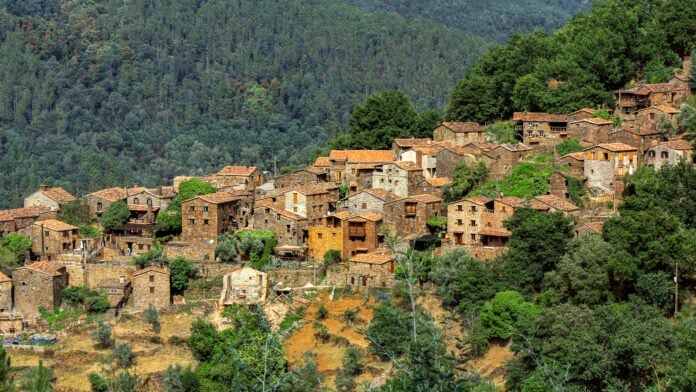I bet you’re having a hard time figuring out how to pronounce the word “schist”. Don’t worry, so am I. It’s much easier in Portuguese: “xisto” – “shees-too”. The Schist Villages are a network of, you guessed it, villages! What these 27 villages have in common is the fact that their houses are made of this hard-to-pronounce rock, in line with Portugal’s Center region’s typical architecture that has been kept for hundreds of years.
The Schist Villages, located in the center of the country, represent a hidden Portugal, away from the big cities. A Portugal of yore, of tradition and good food. A Portugal where life is slow and the people are welcoming. A Portugal covered in forests and hills, with old stone houses that urban development has forgotten… The Interior Centro region is one of the least explored regions by tourists coming to Portugal. And that’s a shame because it has so much to offer.
The 27 villages in this network are spread across the Serra da Lousã, Serra do Açor, Vale do Zêzere, and Tejo-Ocreza regions. The best way to visit these regions is to rent a car and quietly discover each road and village, stopping to enjoy the scenery, the typical gastronomy, the village café, and the contact with nature, with the possibility of hiking and mountain biking through the hills, or cooling off on the river beaches.
The Network
Spearheaded by ADXTUR, the Schist Villages Tourism Development Agency, in collaboration with 21 municipalities in the Centro Region and over 200 private operators, this regional sustainable development initiative is making significant strides as it aims to preserve and showcase the cultural and natural landscapes of the territory, breathe new life into its architectural heritage, invigorate the socio-economic fabric, and rejuvenate the arts and crafts scene.
At its core, the mission of the Schist Villages is to carve out a brighter future for this unique territory, utilizing its cultural identity as both a foundational element and a sieve. The approach is rooted in values of environmental and social sustainability, rallying resources and energies in the spirit of a living laboratory where innovative experiments take place.
Now, ideally, you’d take your time, rent a car, and enjoy all of these villages with time. But I know it can be difficult, so I’ll divide them up by region and highlight my three favorites out of each one. Ready? Let’s go!
Serra do Açor
The Serra do Açor is home to some of the northernmost villages in the network – Aldeia das Dez, Benfeita, Fajão, Sobral de São Miguel, and Vila Cova do Alva. These are some of the least explored villages in the network so, if peace and quiet is what you’re looking for, just head to any of these and enjoy their quaintness while you stroll through their streets.
1. Aldeia das Dez
When you arrive, Aldeia das Dez welcomes you with well-kept houses, a red telephone box that contrasts with the landscape, and a privileged location with open views over the surrounding countryside. Most of the buildings here are made of granite. And it’s precisely the buildings that are the most striking: Solar Pina Ferraz, also known as Casa da Obra, is a must-see. It may have been unfinished, but you can see the grandeur of what was envisioned here. Curiosities abound, including a house with an S on the façade, which is nothing more than a stone that was once used.
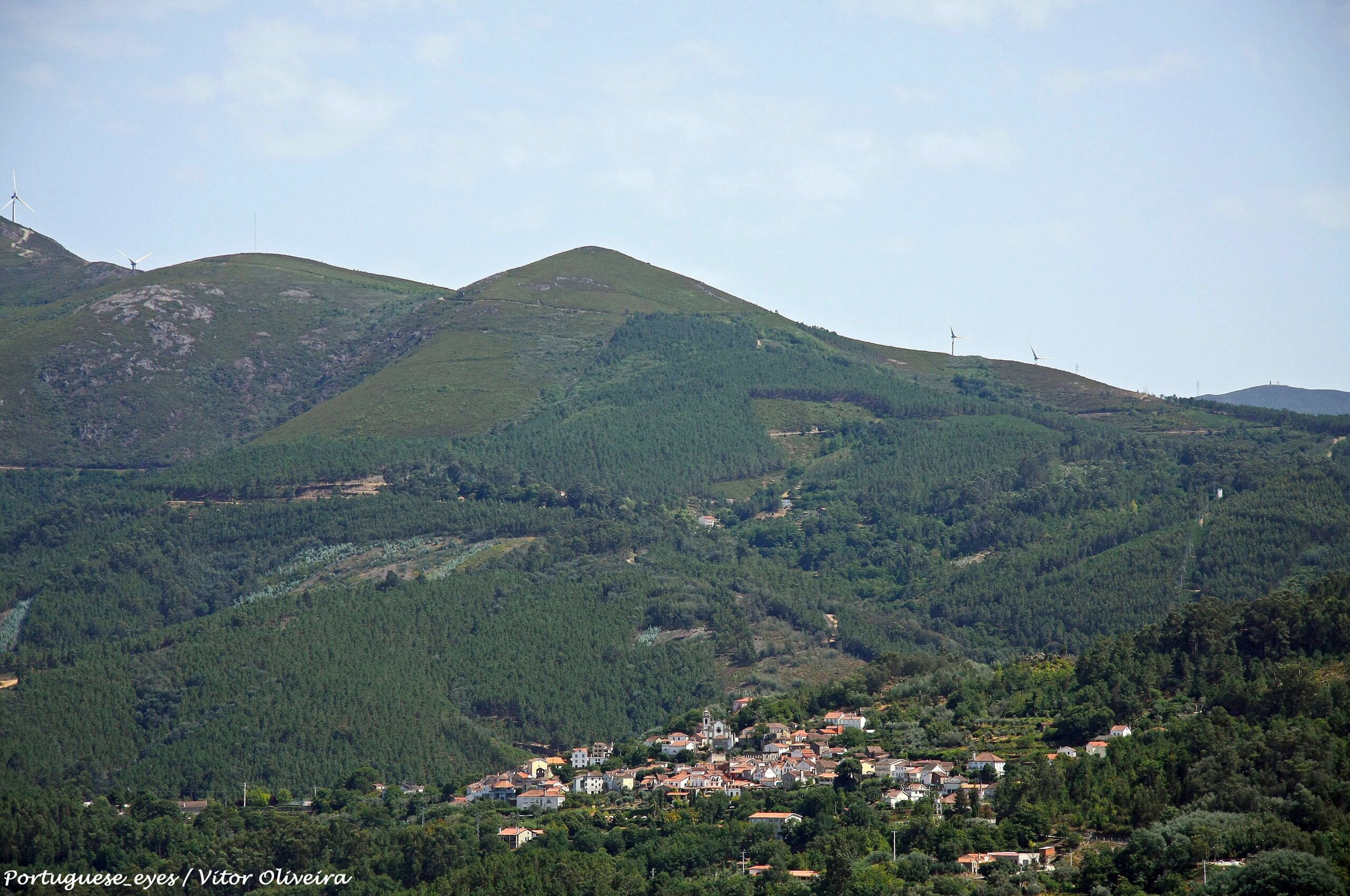
2. Fajão
Fajão is a peculiar village: it may be small, but there is a judge and a jail. Or there used to be. The jail has now been converted into accommodation and the Fajão Judge is a café. The brown of the schist reigns supreme in these two and even on the steps of the alleyways. In the village, you can enjoy the public swimming pool and visit the Monsenhor Nunes Pereira Museum. This museum houses the village’s first public telephone and even an engraving by Fernando Pessoa.
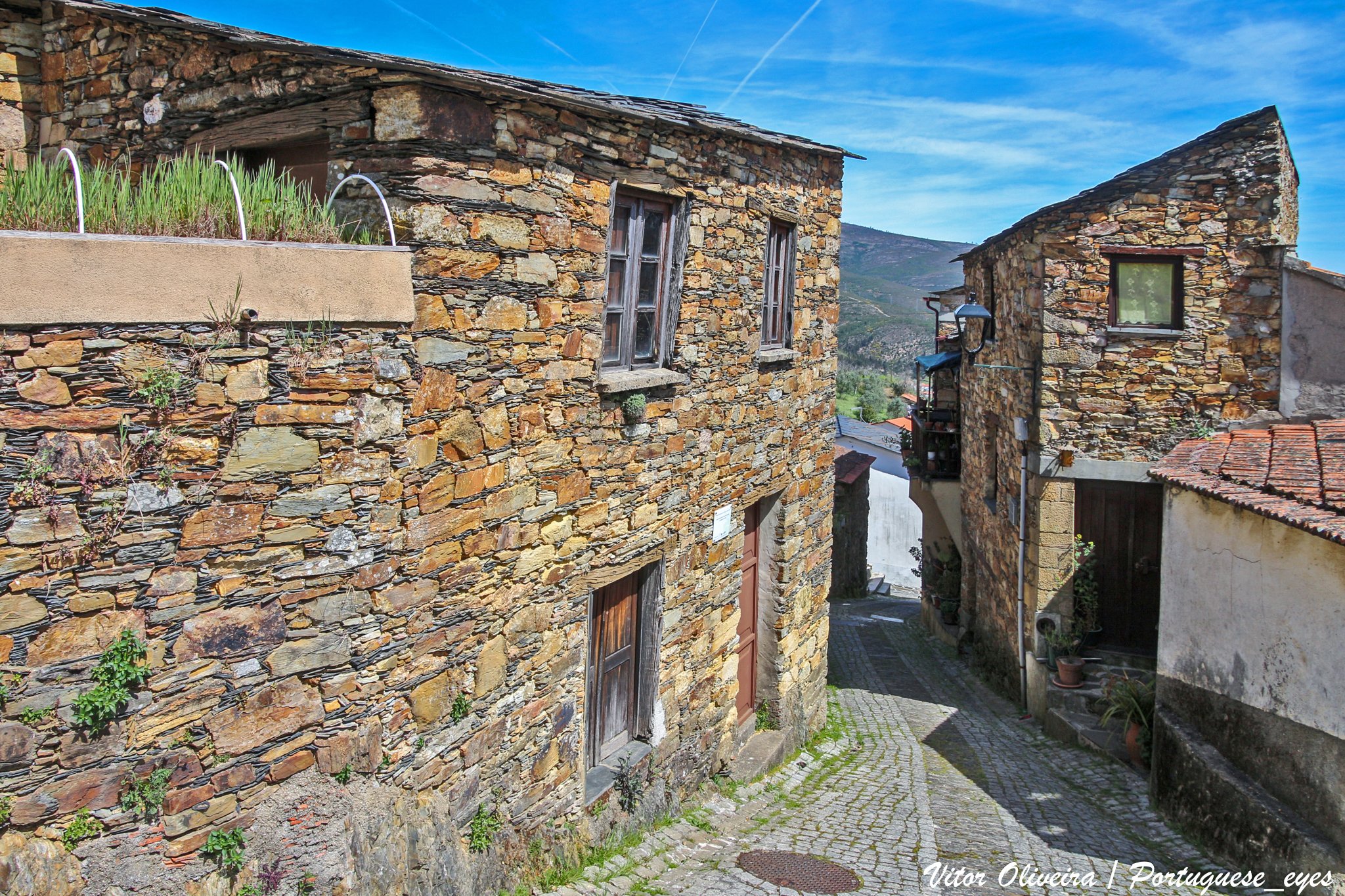
3. Benfeita
The highlight of the area is the Caminho do Xisto da Benfeita (Benfeita Schist Path), a circular route that starts in the center of the village and leads down into the valley of the Ribeira do Carcavão. A narrow trail, along the bank of the stream, takes us to some small but fantastic waterfalls, as well as the transformations of the landscape, the result of man’s secular action. Given the steep slope of this area, it is necessary to leave the banks of the stream and climb up old rural paths, with numerous stone stairs, so you should take extra care.
Serra da Lousã
Serra da Lousã is the area of schist villages best known to travelers. It is also the region with the largest number of villages – ten in all: Aigra Nova, Aigra Velha, Candal, Casal de São Simão, Casal Novo, Cerdeira, Chiqueiro, Comareira, Ferraria de São João, Gondramaz, Pena and Talasnal. Alto do Trevim, at an altitude of around 1200m, allows you to see from the Center region to the sea on clear days.
4. Gondramaz
Gondramaz is a small village with less than ten inhabitants, but they quickly show us that they may be few, but they are good. An inhabitant tells visitors that she doesn’t live alone, as she “lives with her neighbors” and there is a lot of care and a sense of humor in the streets. As soon as you park your car, you come across a poem by Miguel Torga. There are artistic notes on the façades.
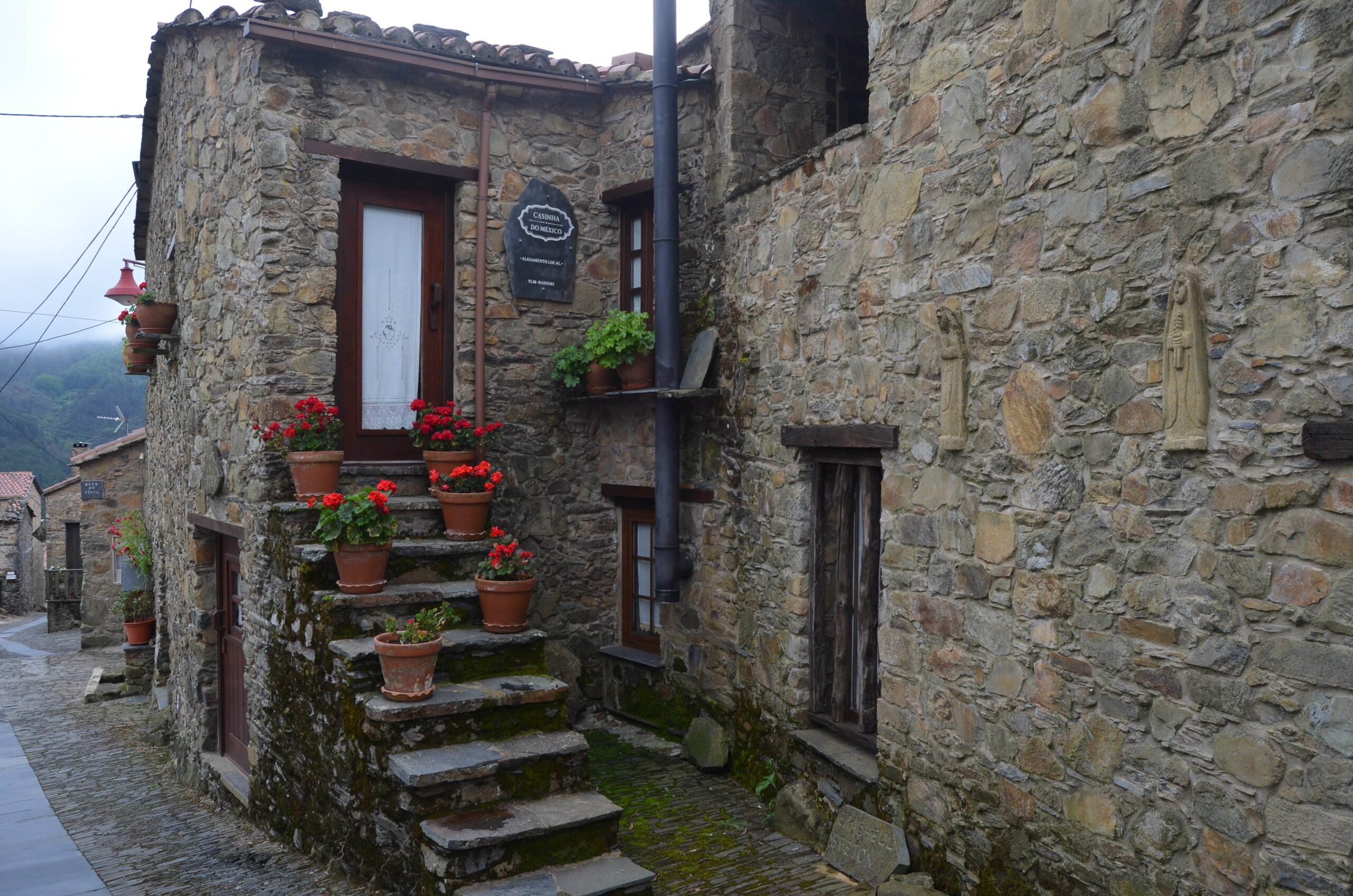
5. Talasnal
For some years now, Talasnal has been one of the best-known schist villages and has even been the setting for advertisements for major international chains. It’s not hard to see why, as you stroll through the streets of the village, climbing stairs, turning here and there. It’s an immensely beautiful, romantic, picturesque village. Because it’s so well known, it’s more of a tourist village, where most of the houses are lodgings, establishments or weekend homes. There are no longer any natural inhabitants here and few actually live here. But there are restaurants, cafés, cultural venues, and stores selling local products.
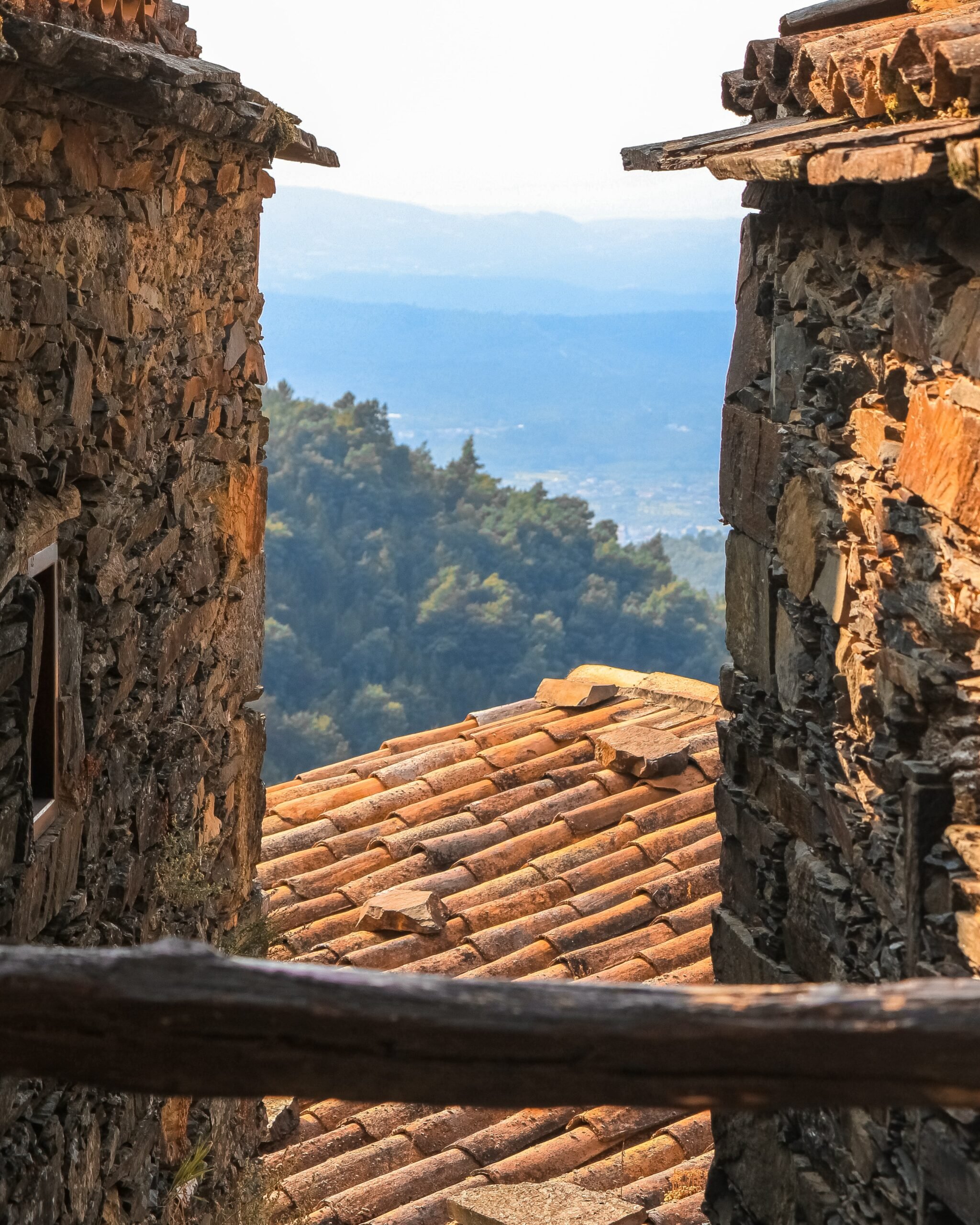
6. Candal
Peaceful life in this village still attracts people to stay there and this direct contact with nature is certainly a strong point for those who choose it as a way of life. Stepping on the schist stones, walking down street after street, leaves us with the full conviction that, despite the difficulties, those who live there extract the best that nature has to offer in an inexplicable calm that is momentarily interrupted by other new residents.
Zêzere
The Zêzere villages group includes six villages – Álvaro, Barroca, Janeiro de Baixo, Janeiro de Cima, Mosteiro, and Pedrógão Pequeno – most of which are located, as the name suggests, on the banks of the River Zêzere. In this area, the river is lord and master of the landscape and of the most striking images that remain in our memory. Thinking about it, perhaps it was the view of the river that led us to select our two favorite villages.
7. Álvaro
Álvaro is not your typical schist village: the landscape, seen from the road before we arrive, shows us a village painted white and very well laid out. The schist is there, hidden underneath. It’s a resilient village, which has already recovered from strong fires, but which retains the charm of an unspoiled village. Perhaps it’s because of its faith: in Álvaro, we lost count of the churches, chapels, little chapels, and little souls that exist.
8. Janeiro de Cima
The whole village is a pleasant surprise. On the façades, the houses have an original combination of schist slabs and river pebbles, embedded here and there. At first glance, it’s a different village, due to the particularity that the pebbles add to the landscape. In the Casa das Tecedeiras, there is a giant loom to pay homage to the village tradition. There are two churches and several chapels to visit. On the river, you can see the traditional boats. And even a wheel that takes water from the river to irrigate the fields, the Roda de Janeiro, which is still in operation. Around the village, there is a walking trail to explore.
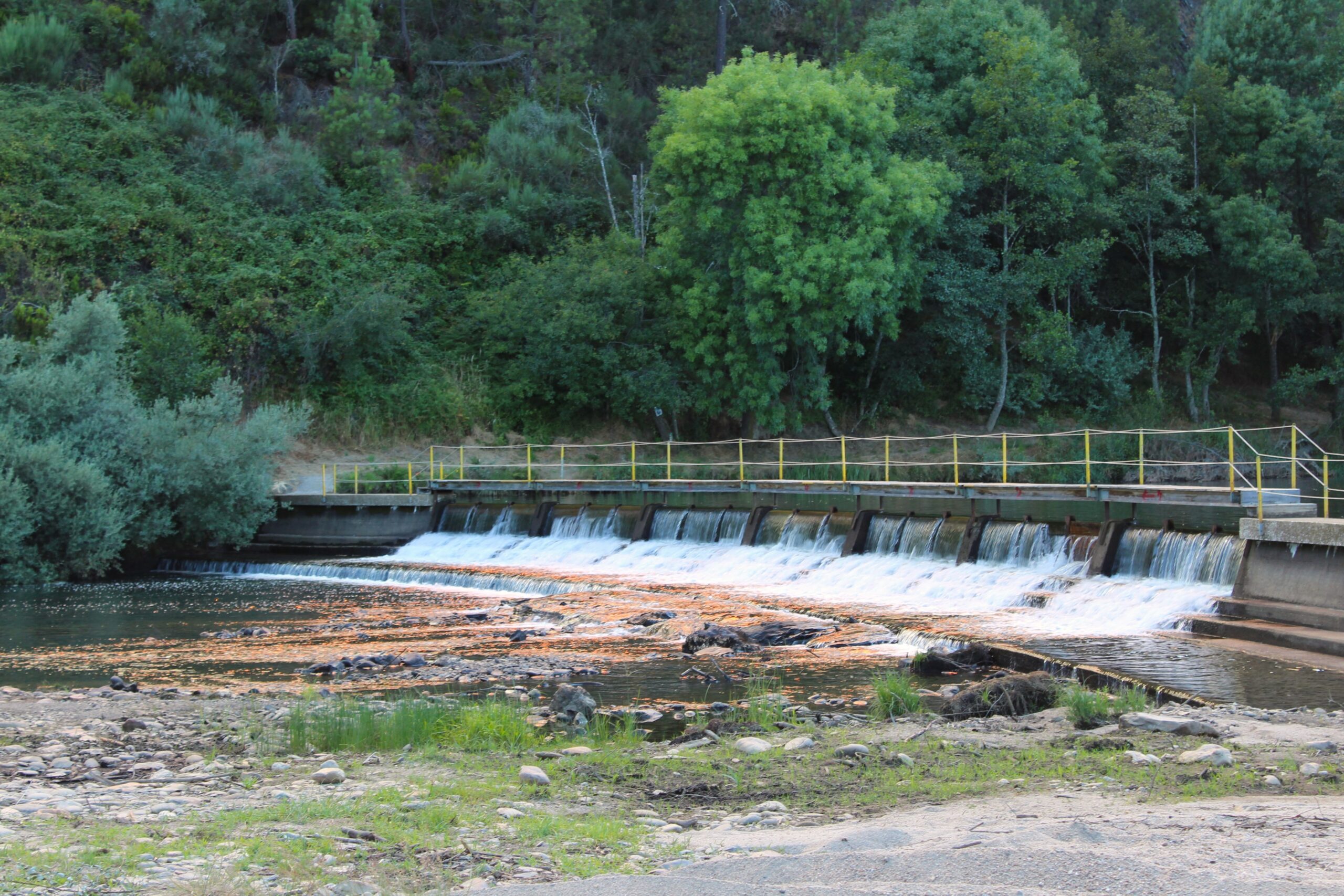
9. Pedrógão Pequeno
Located on a hillside above the River Zêzere, eighteen kilometers from the county seat, Pedrógão Pequeno is an ancient settlement, with some evidence of Roman civilization still remaining. The church, in Manueline style and made up of two large naves, dates from the 17th century. Also noteworthy are the Chapel of Nossa Senhora da Confiança, the Misericórdia church, the cross at the viewpoint, the sidewalk and dam of Cabril, and the Roman and Philippine bridges. The stone houses, whitewashed and with granite stonework, are extremely picturesque.
Tejo-Ocreza
The villages of the Tejo-Ocreza region form the smallest group, with only four schist villages (Água Formosa, Figueira, Martim Branco, and Sarzedas) but, at the same time, it is the largest group in territorial terms. Scattered between Vila de Rei, where Água Formosa is located, and Castelo Branco, where Martim Branco is located, they are all villages with little tourist exploitation and a sweet calm surrounded by the colors of central Portugal.
10. Figueira
The beauty of the streets, the irregular door frames, the lace curtains in the windows and the smell of figs in the air make me choose Figueira as one of the prettiest (and most genuine) villages I’ve visited. It’s easy to get lost in the streets, hidden in the shade of the vines. And that’s how you find the community oven, which is still in operation, and where you can see the wooden board where each family, in times gone by, used their “trabuleta” to mark their turn to bake bread. The marks of the community spirit that once lived in the village are numerous.
11. Martim Branco
The name of the village may be misleading, but in Martim Branco the predominant color is schist. And here it’s worth exploring not only the village, once you’ve parked your car next to the community oven, but also the banks of the river. After all, in Martim Branco you can take a refreshing dip in the Ribeira de Almaceda, which runs alongside the village. The weir with vertical slabs of schist transforms the water into pleasant pools.
12. Água Formosa
Água Formosa is hidden in a valley. Isolated by nature and emigration. However, the beauty and tranquility are attracting new residents who are giving life to the schist houses and small vegetable gardens. The streets are very narrow and movement is reserved for locals and a few visitors. The village has around two dozen schist houses. Most of them have been restored. They are on the mountainside, facing the sun and the Galega stream, which carries with it the only sound that marks the deeply isolated atmosphere.
Last Thoughts
Before signing off, there are a few things to keep in mind. First, most of the villages in each region are quite close to each other so take the opportunity to visit more than one, it’s worth it.
Second, not all the villages are exclusively made of schist, nor are they all brownish landscapes as our imagination might first think. But they all possess a singular beauty, without exception.
Third, most of the villages are located at high points or on their respective slopes. That’s why you need to be prepared to walk up and down and to wear suitable, non-slip footwear. And fourth, all in all, the Schist Villages offer good food. Make the most of your trip to discover some of Portugal’s best delicacies.
So, what are you waiting for? Put on your walking shoes and get on the road!

